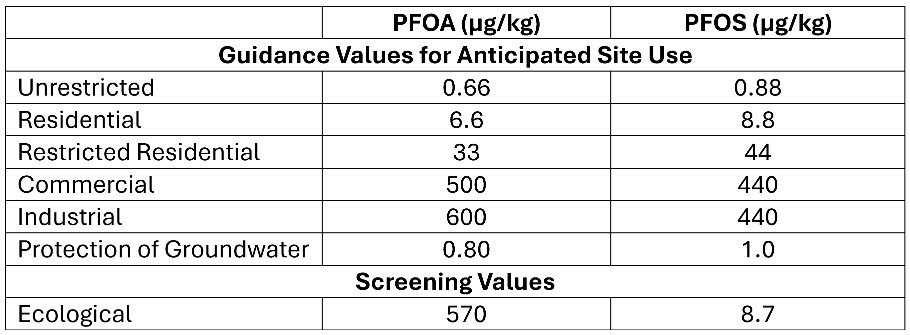
Utility and Industry Groups Sue EPA Over PFAS Rules
Utility and industry groups have filed petitions against the U.S. Environmental Protection Agency (USEPA) related to recently promulgated PFAS regulations. On June 7, 2024, American Water Works Association (AWWA) and Association of Metropolitan Water Agencies (AMWA) filed a Petition for Review of USEPA’s National Primary Drinking Water Regulation (NPDWR) for six PFAS. AWWA and AMWA detail concerns in their petition of USEPA’s scientific process for finalizing the NPDWR and its impact on water affordability. On June 10, 2024, U.S. Chamber Commerce, Associated General Contractors of America, Inc., and National Waste & Recycling Association submitted a Petition for Review of USEPA’s designation of PFOA and PFOS as Comprehensive Environmental Response, Compensation and Liability Act (CERCLA) hazardous substances.
DoD Releases Guidance on Fluorine-Free Foam Use at Military Installations
On May 17, 2024, the U.S. Department of Defense (DoD) issued guidance on the use of fluorine-free foam (F3) at military installations. DoD is currently transitioning from aqueous film-forming foam (AFFF) to military specification qualified F3. The transition is in accordance with the FY 2020 National Defense Authorization Act (NDAA), which prohibits the use of AFFF at military installations starting October 1, 2024. As DoD continues to transition to qualified F3 products, AFFF and F3 may be used at military installations. DoD will continue to follow existing response and reporting procedures to contain and recover AFFF, if released. DoD facilities are required to restrict the use of F3 for training purposes to designated training locations capable of preventing discharge of F3 to the environment, and F3-impacted media will be disposed of in coordination with installation environmental staff.
ASTM Publishes Guidance on Measuring PFAS in Indoor Air
On April 5, 2024, ASTM published ASTM D8560-24, a Standard Guide for Determination of Airborne PFAS in the Indoor Air Environment. The standard provides a summary of methods currently available for sampling PFAS in indoor air, which include active sorbent sampling, passive sorbent sampling, and “online” (i.e., immediate analysis) sampling. For sorbent sampling, sampling and analysis with different sorbent medias and extraction methods are described. The standard indicates that the selection of an indoor air sampling method should consider the applicable physical-chemical properties of the target PFAS given that properties such as vapor pressures and Henry’s Law constants can differ by several orders of magnitude for individual PFAS.
Vermont Restricts Consumer Products Containing PFAS
On May 30, 2024, Vermont Governor Phil Scott signed into law Bill S.25 that regulates consumer products containing PFAS and other chemicals. The bill bans the intentional addition of PFAS in a variety of consumer products with the following phaseout timeline:
- January 1, 2026: Cosmetic and menstrual products, consumer products, food packaging, and firefighting agents and equipment
- July 1, 2027: Outdoor apparel intended for use in severe wet conditions
- July 1, 2028: Textiles
In addition to PFAS, the bill bans the intentional addition of 13 other chemicals or chemical classes in cosmetic and menstrual products beginning January 1, 2026, and four other chemicals beginning July 1, 2027.
New York Proposes PFOA and PFOS Soil Cleanup Guidance Values
On June 18, 2024, the New York State Department of Environmental Conservation (DEC) proposed revisions to its CP-51 Soil Cleanup Guidance, which would establish new PFAS guidance values. CP-51 provides the framework and procedures for selection of soil cleanup levels for New York remedial programs. Soil guidance values for PFOA and PFOS under various anticipated site uses and new ecological screening values would be created and are included in the table below. Additionally, the proposed guidance requires PFOA and PFOS concentrations in imported soil to be compared against the guidance values, anytime a full Target Compound List/Target Analyte List is required.

Public comments on the proposed revisions can be submitted by emailing derweb@dec.ny.gov by September 26, 2024.
San Francisco Prohibits Fire Department from Providing or Using PPE with PFAS
On May 24, 2024, the U.S. City and County of San Francisco passed an ordinance that prohibits its Fire Department from providing or using personal protective equipment (PPE) containing intentionally added PFAS. The ordinance requires its Fire Department to purchase new protective clothing made without PFAS for its more than 1,400 firefighters by June 30, 2026. The Fire Department is also required to conduct regular meetings with labor representatives and submit regular reports to the San Francisco Board of Supervisors and Fire Commission detailing its progress toward meeting the June 2026 deadline.
CL:AIRE Releases Interim PFAS Screening Levels
CL:AIRE, a UK charity focused on sustainable land reuse, recently released Interim Category 4 Screening Levels (C4SLs) for four PFAS. C4SLs are “cautious estimates of contaminant concentrations in soil that are still considered to present an acceptable level of risk” and are prepared by evaluating human health toxicology, exposure assessment, and ambient concentrations in the environment. The interim C4SLs for PFOA, PFOS, perfluorohexane sulfonic acid (PFHxS), and perfluorononanoic acid (PFNA) are based on chronic risk and are included in the table below. The interim C4SLs should be used with a hazard index approach to guide land use. Measurements of the four individual PFAS are divided by their respective C4SL to calculate their hazard quotient (HQ). The four HQs are then summed to calculate the hazard index. A hazard index or hazard quotient greater than 1 would be considered an exceedance.

Questions?
If you have any questions or would like to discuss how PFAS may impact your business, please email pfas@geosyntec.com to be connected with a PFAS technical expert.
